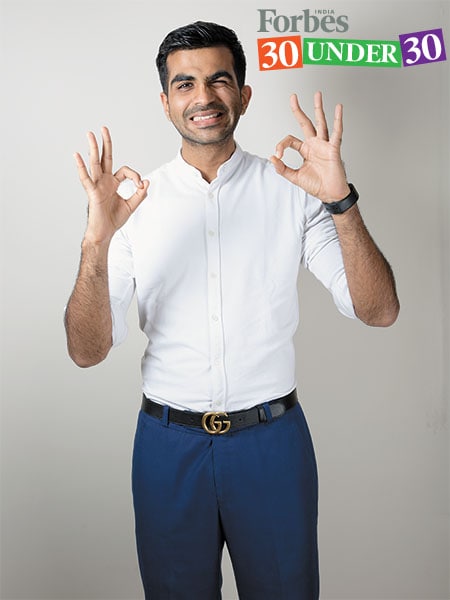
Akhil Aryan: On a power trip
To accelerate the transition to an all-electric future, the battery management and intelligence platform uses analytics to improve battery performance
 Image: Aditi Tailang
Image: Aditi TailangAkhil Aryan | 28
Co-founder, ION Energy
ION Energy was founded in October 2016 by Akhil Aryan (28). The company “is primarily a battery management and intelligence platform” provider, Aryan says. “Our mission is to accelerate the transition to an all-electric future.”
ION uses advanced electronics, Internet of Things technologies and cloud-based analytics—areas that aren’t the traditional strengths of makers of vehicles that burn fossil fuels.
“We are today India’s largest battery-management system [BMS] company,” Aryan claims. This is a combination of hardware electronics—almost like a motherboard—and software. ION also makes an analytics solution called Edison Analytics that sends back over-the-air instructions and software code to the vehicle’s BMS to improve the battery’s performance.
In 2017 Alexandre Collet sold his BMS company Freemens in France to ION and came on board as co-founder and CTO. Today, ION has a third of the market for the type of technologies it sells, in the electric two- and three-wheeler market in India, Aryan claims. Based in Mumbai, the startup has a staff of 53 and does both its R&D and manufacturing in India and ships its products to 12 countries. Revenue is expected to jump from $2-4 million in 2019-20 to $10 million in the following year.
ION Energy’s technologies and solutions are “agnostic to use cases [stationary and mobile] or battery chemistry, which is constantly evolving,” says Rijul Jain, a member of the investments team at investor Astarc Ventures. “The opportunities are endless with battery deployments increasing exponentially across the world across the different use cases.”
See the full Forbes India 30 Under 30 list for 2020 here
Completely new verticals are being set up, including lending and insurance, and charging stations where there is high requirement of data that ION’s product generates, Jain adds. The challenges would be in addressing large enterprises’ requests for features, providing support using a small team and the long-term strategy of building horizontal layers or going deep and building for a few large verticals, he says.

(This story appears in the 30 November, -0001 issue of Forbes India. To visit our Archives, click here.)





